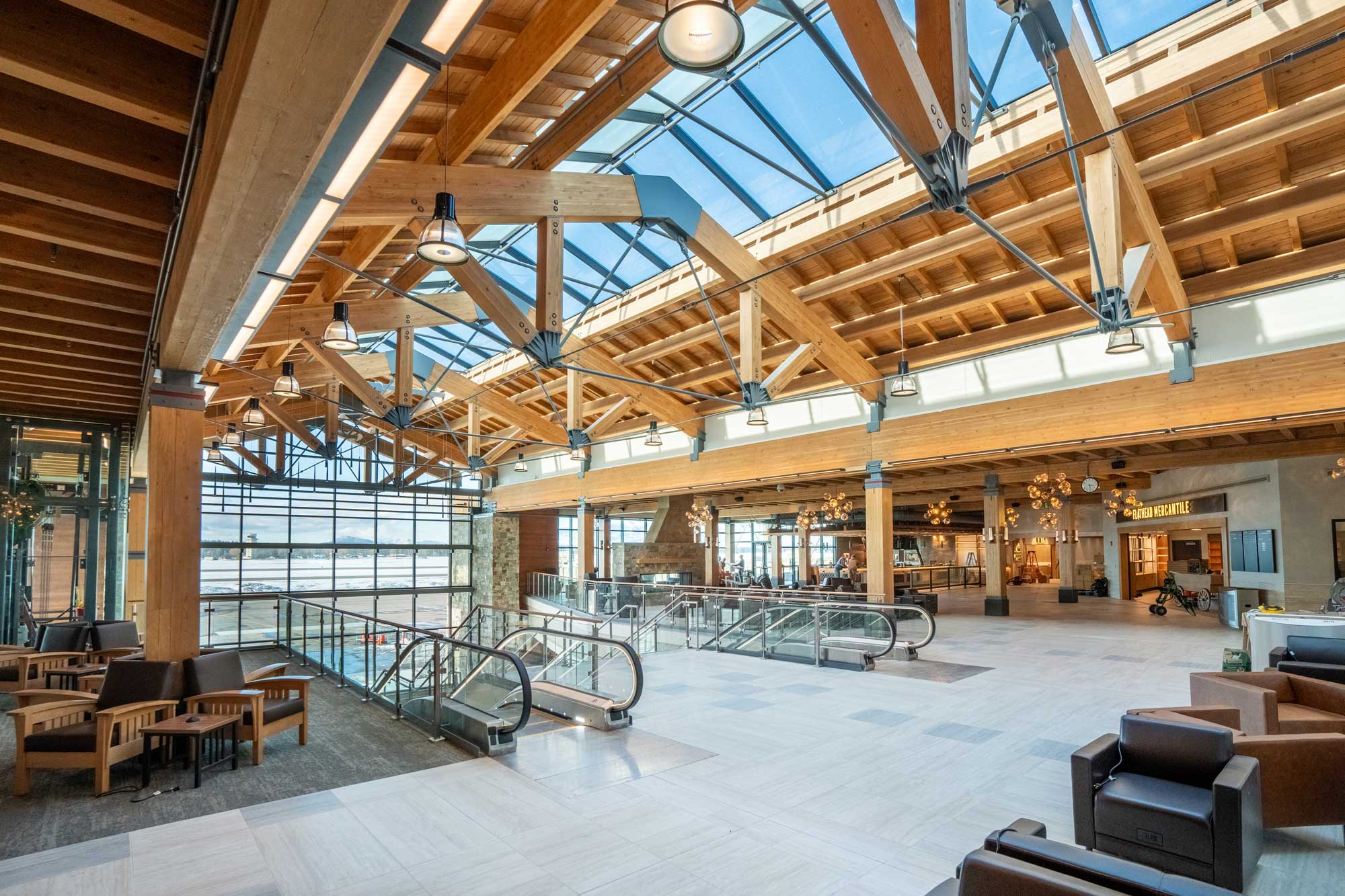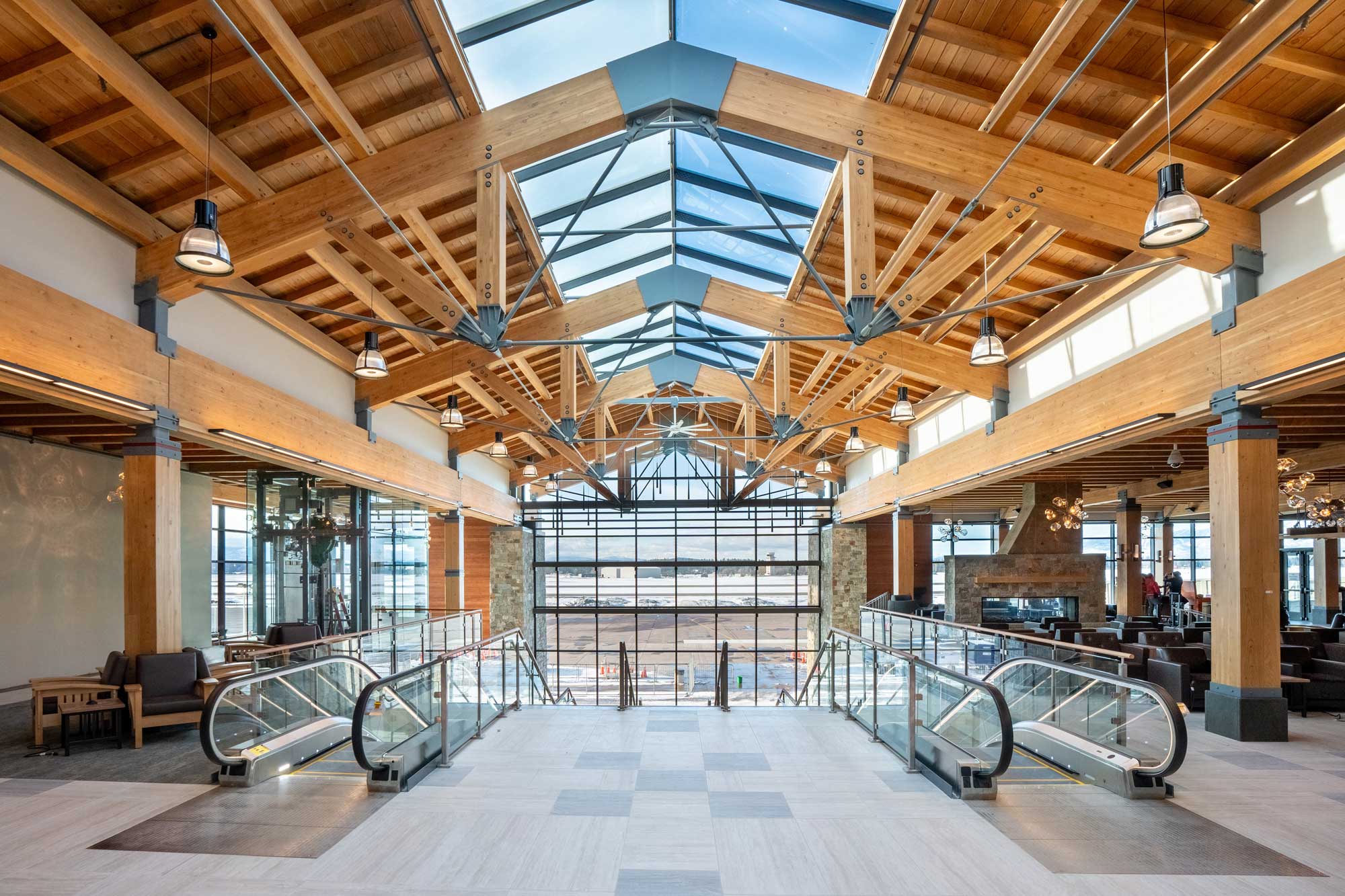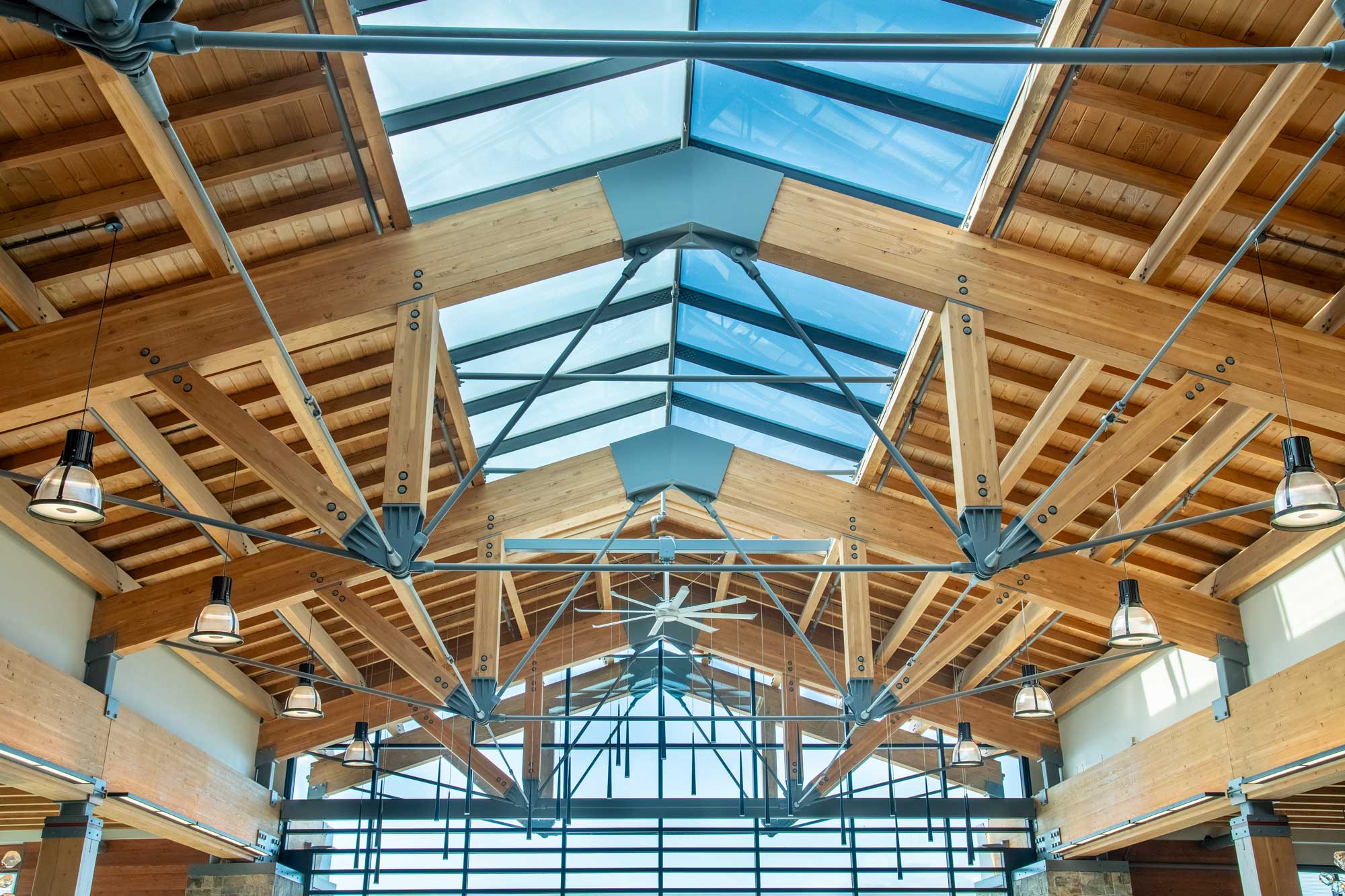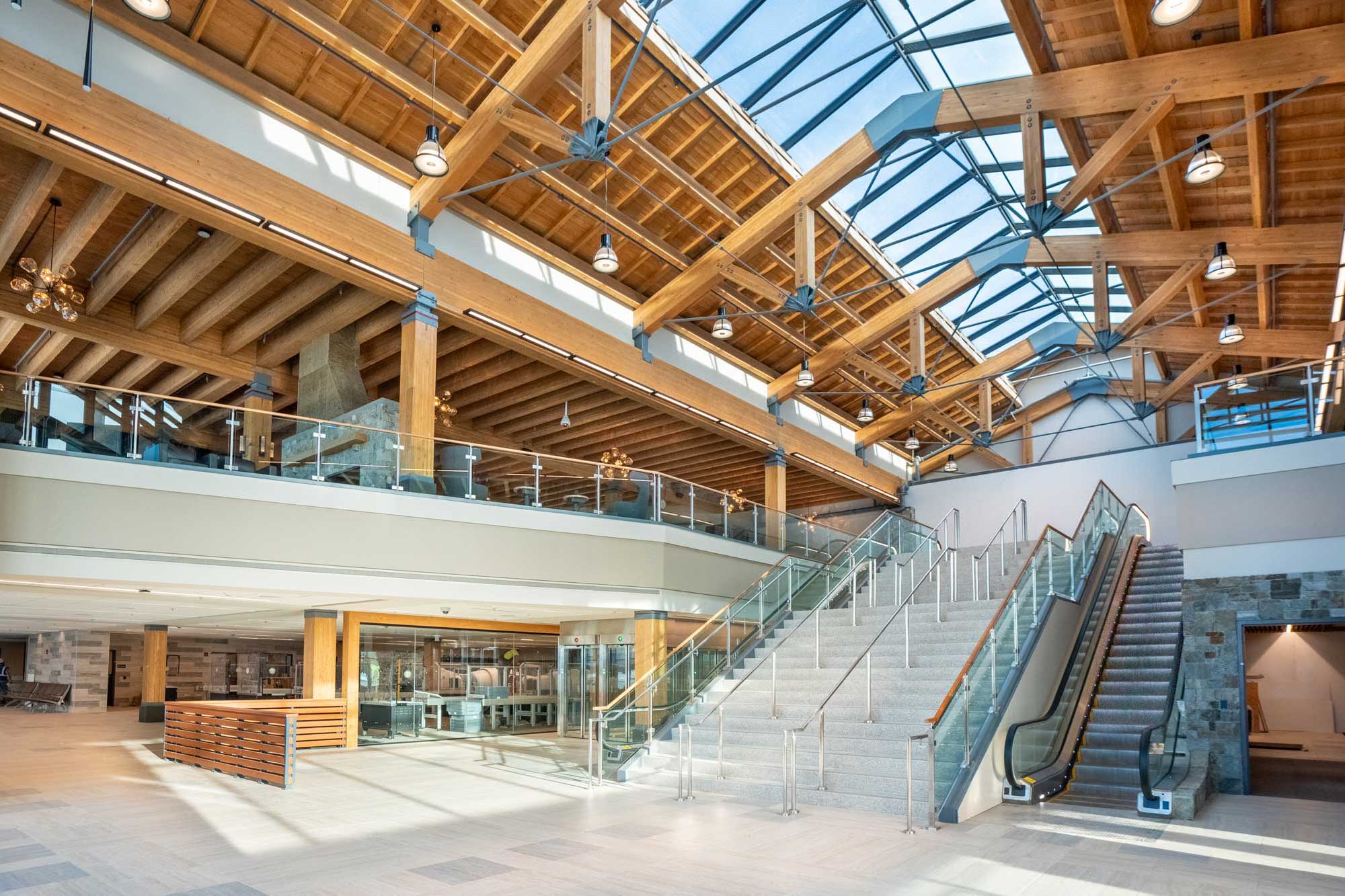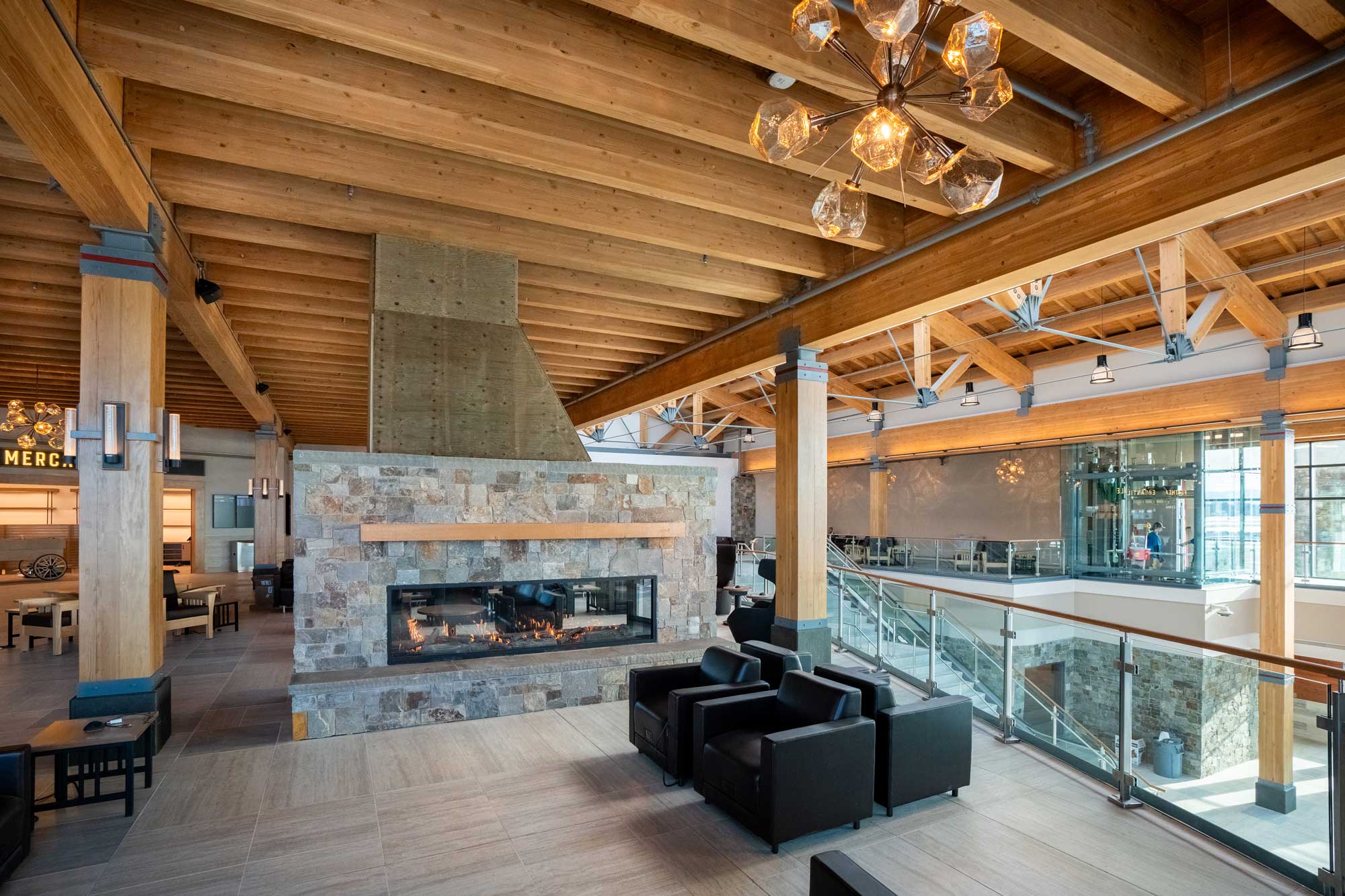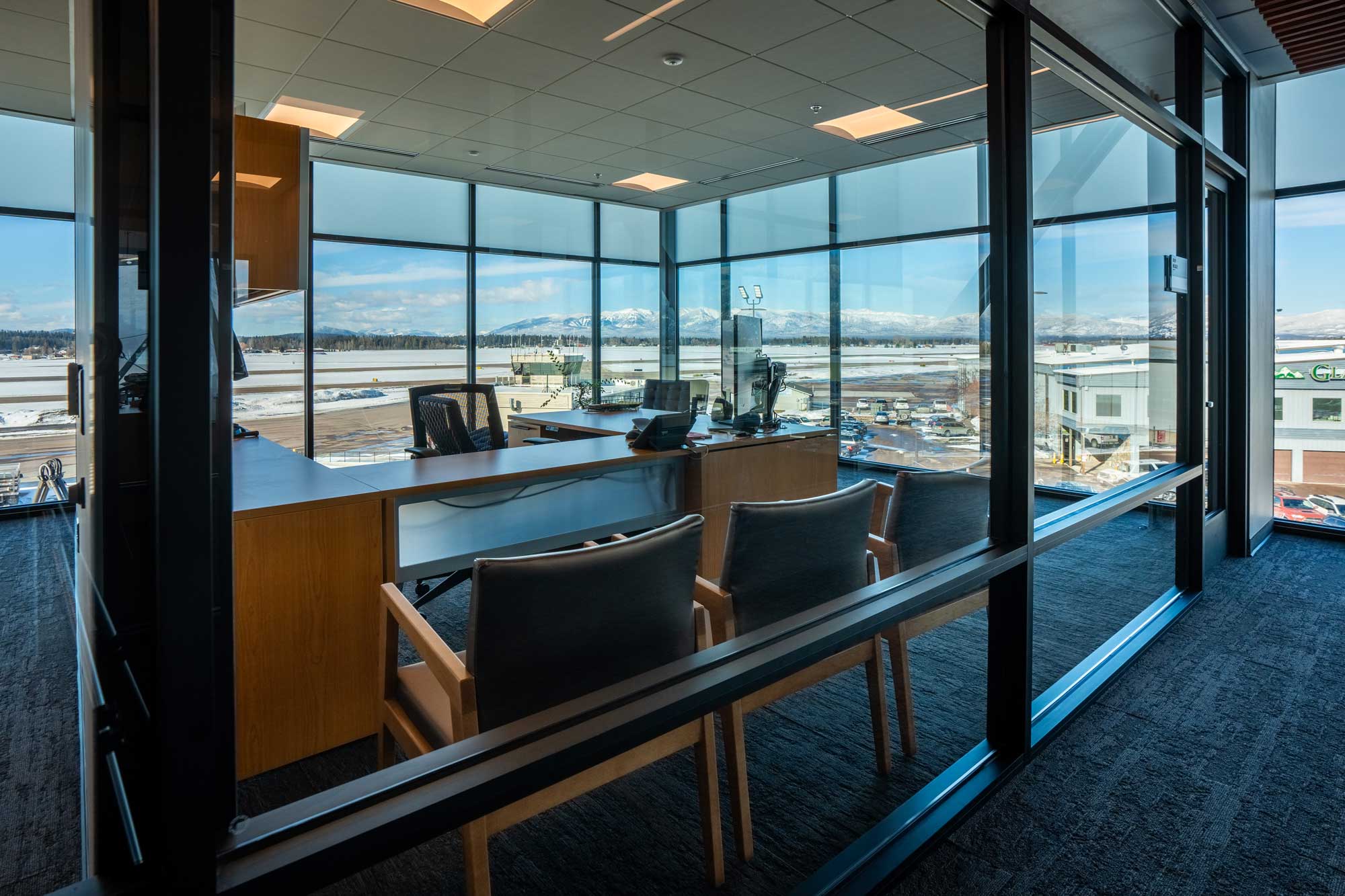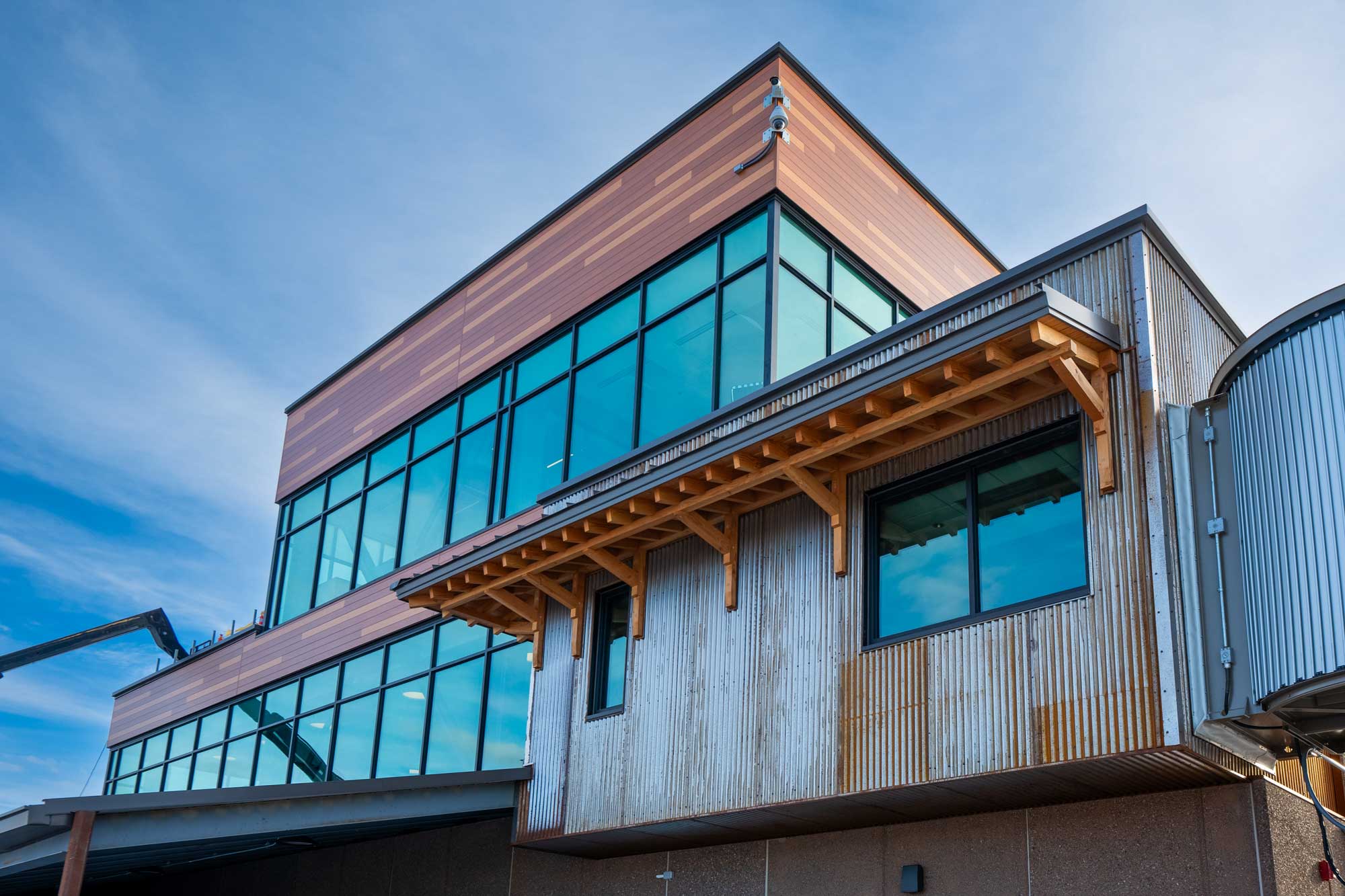Glacier Park International Airport Expansion and Renovation Phase 1
Originally constructed in 1948, Glacier Park International Airport (GPIA) — then called Flathead County Airport — was most recently remodeled in 1999. Traveler counts roughly doubled between 2009 and 2019, creating an urgent need for updates. Cushing Terrell worked with architects of record Mead & Hunt and the general contractor — Swank Enterprises Q&D Construction LLC, A Joint Venture — to provide structural, electrical, and fire protection design services for this nearly $100 million, multi-phase expansion and renovation project.
The expansion, which increased the terminal footprint from 75,000 to 200,000 sq. ft., strategically prepared the airport for the project passenger volumes of the next 20 years. The new concourses are comprised of seven gates with departure lounges and boarding bridges. Additional upgrades included enhanced pre- and post-secure concessions, enlarged security checkpoint, baggage claim, airline ticketing offices, ticket lobby, administrative offices, and new baggage handling, screening, and outbound baggage make-up systems.
The design updated an aging terminal through a contemporary mountain aesthetic inspired by nearby national park lodges — most especially the one at Glacier National Park, a prime local tourist destination. Backlit steel panels reflecting the natural landscape set the stage for arriving visitors set under a steel, glass, and stone canopy. Bringing the outside in, heavy timber trusses supported on multistory stone piers frame views of the surrounding mountainscape through patterned glass walls. The Great Hall is a mixture of rustic and modern design, welcoming the next generation of visitors to the Flathead Valley.
All of the construction activities were performed while the airport remained 100% operational, which greatly contributed to the complexity of the project.
Electrical Design
The project required a substantial electrical upgrade. A new 4000-amp 480/277V service and a generator plant consisting of (3) 750kw generators were added for Phase 1. Electrical power upgrades were required for three new boarding bridges, a new baggage handling system, a new chiller plant, and a new north-end mechanical plant. Cushing Terrell coordinated with Mead Hunt for upgraded lighting requirements, powered furniture, security check stations, and all low-voltage systems.
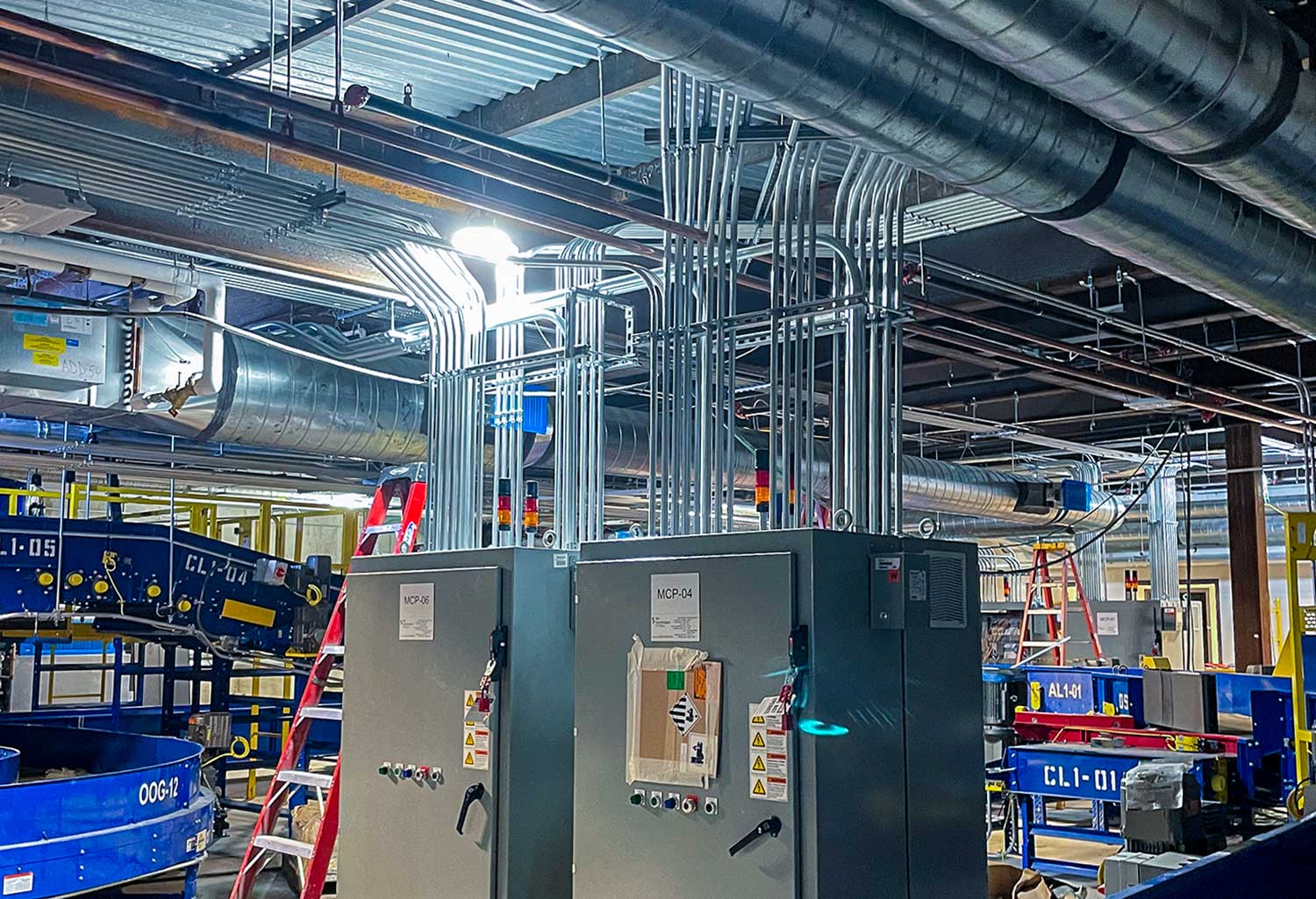
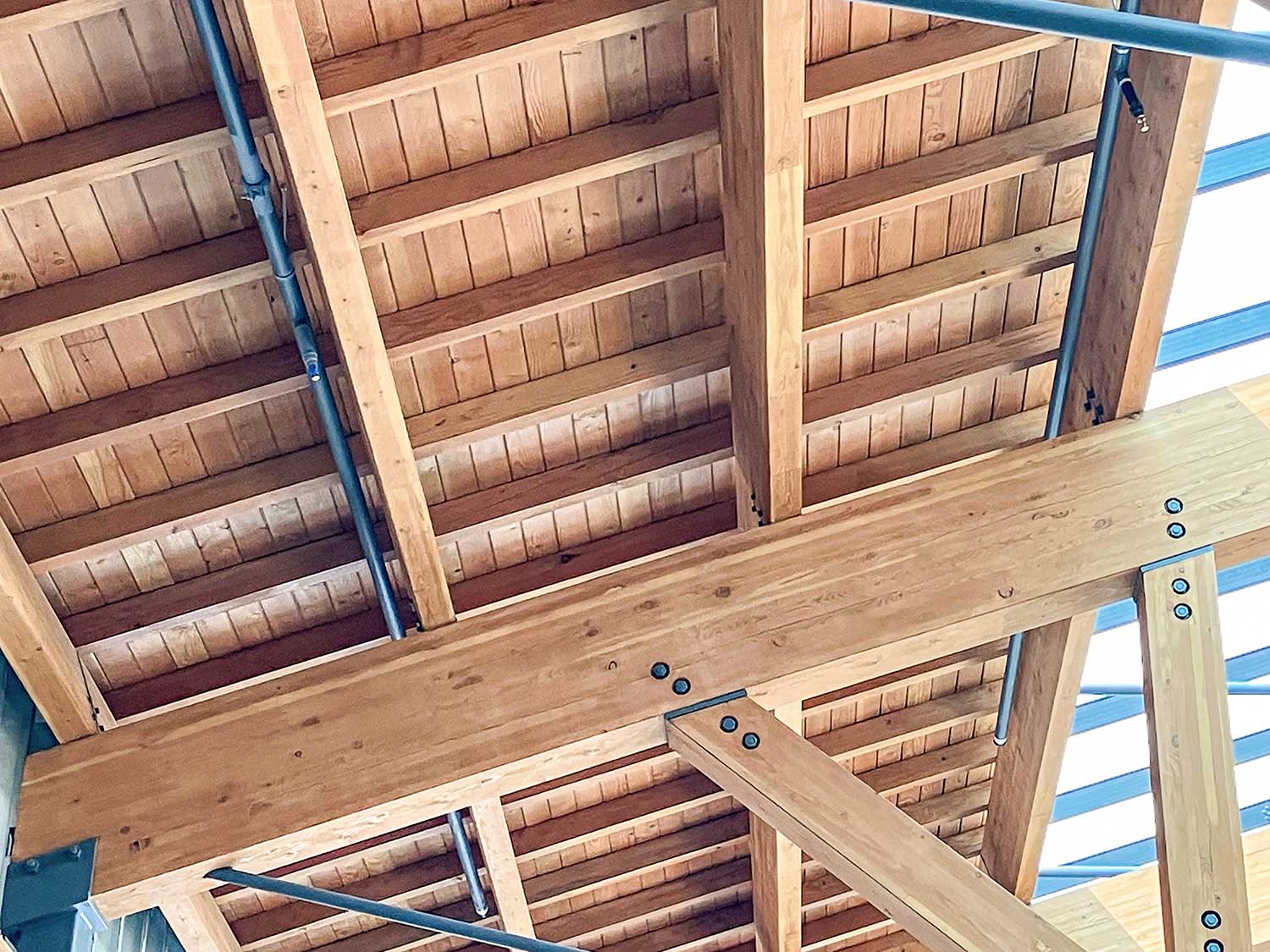
Fire Protection Design
The fire protection design involved tying the new building addition sprinkler and alarm systems into the existing fire protection system. Fire sprinkler and alarm systems needed to remain active in the occupied portions of the building during construction, requiring temporary services and coordination amongst teams. The high ceiling lobby and pipe routing at the front entry canopy involved detailed sprinkler layouts during the engineering design phase to maintain the look and feel of the intended architecture while ensuring proper fire protection.
Structural Design
The structural design addressed numerous complexities. High groundwater, high seismic design requirements, and high design snow loads were all incorporated into the structural design of the building. This project incorporated structural steel, concrete, concrete masonry (CMU), and heavy glue-laminated timber framing. Overall compatibility with the existing structure, existing framing, and expected lateral movements between the two played a role in determining new building components and phasing requirements.

LOCATION
Kalispell, MT

